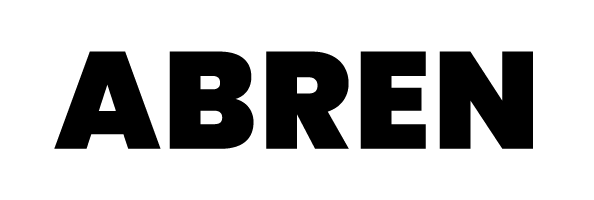|
Getting your Trinity Audio player ready...
|
This is an excerpt from the latest extended version of “Getting Ethiopia Dead Wrong” a book by veteran Horn of Africa correspondent Rasmus Sonderris
Before I explain this, a caveat is in place. Fano is a movement rather than an organization. Notwithstanding repeated and ongoing attempts to unify the various Fano factions, there is still no Fano central command, let alone an official Fano platform. Incidentally, this is why it is harder to negotiate with Fano than with the TPLF, as the most extremist Fano groups, who tend to become empowered under a state of war, will disavow concessions made by compromise-minded ones. It also makes it harder to pin down the Fano philosophy, so this is but a rough generalization based on reading and listening to pro-Fano individuals.
Their claim that Amharas have been persecuted ever since the overthrow of Emperor Haile Selassie in 1974 is an exaggeration. But there is a kernel of truth in that the scapegoating of Amharas has been the staple of various ethnonationalist discourses for decades in Ethiopia. This has even seeped into the world press. For instance, a recent BBC article describes the Amharas as “historic rulers of Ethiopia”. The characterization of Amharas as oppressors is inaccurate and incendiary. However, as already mentioned, it is fair to say that Amharas generally identify with and are identified with Ethiopia. Fano used to be the term for the patriotic guerrilla soldiers who resisted the fascist Italian occupation from 1935 to 1941 (which is why the militia’s adversaries today will often call it something else). Stressing how the Ethiopian and the Amhara identity are interwoven, Fano uses the basic version of the Ethiopian flag, just green, yellow and red, that is, without the blue disk with the golden pentagram, which was put there by the EPRDF in 1996. While secession is the lodestar of the OLA and a fallback option for the TPLF, only coming to power on the national stage makes any sense for Fano. If anything, people in the Fano camp wish to abolish the Amhara Region, which is a brainchild of the hated ethnic federalism.

Another Fano talking point is that the federal government, elected though it is, has lost its legitimacy through acts of oppression, such as arrests of opposition leaders, journalists etc. The government likes to refute this by comparing to the darkest years of the TPLF/EPRDF. But it is hard to deny that the liberalization and democratization agenda has backslid to give way to the security state. We saw how the soft touch of Abiymania in 2018-2020 enabled violent ethnonationalism to bubble up across the country. The response to all this bloodshed has been a hardening of minds and policies. The Ethiopian judiciary has no history of being independent. Still today, it is safe to assume that both the jailing and the freeing of politicians, and probably of journalists too, takes place on orders from the executive. Thus, without examining the details, I will not vouch for the fairness of detentions and trials of politicians and journalists. Some of them may well be innocent by normal democratic legal standards. However, whenever I have cast a glance at their cases, there is direct or indirect advocacy for violence. Learning from the TPLF’s propagandists, Fano supporters will portray the motive of the government and judiciary as ethnic-based persecution. In reality, not necessarily the justification, but the root cause, is the fact that people are getting killed, which is making everyone involved, bar the diaspora activists, live in fear. It is simply unrealistic to have the same rules apply in peace and in war.

Another justification held up by the Fano camp is all manners of cruelty against Amharas en masse. Exhibit A for this accusation is, as mentioned in Part 3, the massacres in Wollega in western Oromia, which have cost the lives of thousands of unarmed Amharas, with whole families being slaughtered. A particularly nasty episode took place in August 2022, just as the war with the TPLF entered its final phase. These and similar crimes against Amharas in Oromia, including mass kidnappings of Amhara university students, have caused public outrage. The federal government has been rightly criticized for not providing security, and the prime minister for failing to strike the right empathetic note. But the perpetrators have been Oromo extremists, not least the TPLF’s old ally, the OLA, which remains, as of mid-2024, at war with the federal government.
And quite a dirty war at that, it seems. According to a Reuters investigation from February 2024, when Abiy Ahmed rose to power in 2018, senior government officials in Oromia set up a secretive Korree Nageenyaa (Security Committee in the Oromo language), aimed at crushing the OLA with extrajudicial killings. Fano supporters have used this to paint a picture of a government that operates with callous disregard for due process. This is a fair point, but it shatters a core tenet of Fano’s case for war, namely that the leading Oromos in the governing Prosperity Party are on the same side as the OLA. If this does not hold true, it is in fact the Fano insurgents who are helping the OLA by keeping the federal army overstretched on two fronts.
Were it not for the federal army, the OLA and Fano would probably conquer their own regions, and then clash in a cataclysmic showdown. Thus far, there have only been occasional skirmishes between the two, but their hatred of one another helps fuel both regional wars. You never know in Ethiopian politics, but formal collaboration between the OLA and Fano is an absurd suggestion. And yet, they are both fighting the federal government. They are enemies in theory, but they are allies in practice.
As for the accusations of civilians being killed by federal troops in Amhara Region, trust in the reports of international human-rights organizations ought to be rock bottom after their partisanship during the war with the TPLF. Nevertheless, there is no doubt that the war in Amhara, like the one in Oromia, can be dirty. Extrajudicial revenge killings of mere suspects and other counterinsurgency measures outside the law must be condemned.
Again, this is no different from the war with the TPLF. There are the closeups of individual war crimes on both sides that call for justice. And there is the zoom-out of a political scenario that calls for respecting state monopoly on violence. The minimum requirements for taking up arms is that the established government is illegitimate, that the rebellion has broad popular support, that a sound context analysis is in place, and that a better alternative is within realistic reach. The Fano insurgency meets none of these conditions. In particular, those who paint Fano as fighting under the banner of democracy and human rights should notice how assiduously Fano politicians are courting the dictator of Eritrea, Isaias Afeworki, seeking his sponsorship, albeit apparently with limited success.
Getting Ethiopia Dead Wrong is now available on Amazon Kindle, paperback, or hardcover











You must be logged in to post a comment.